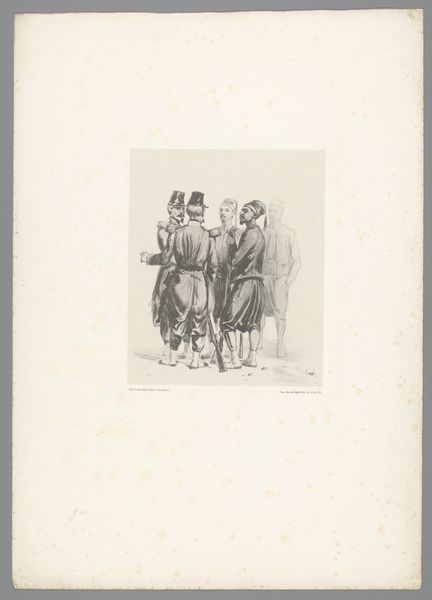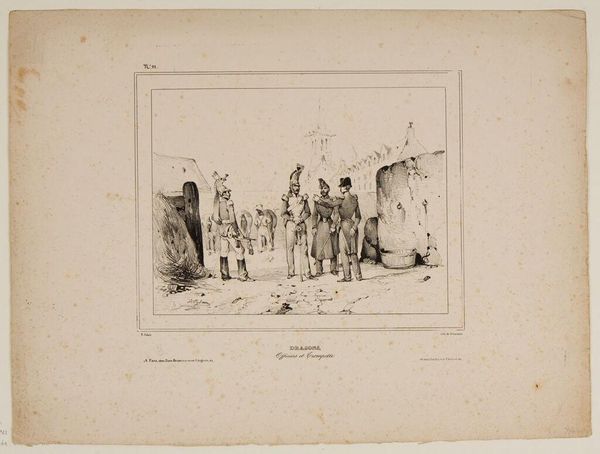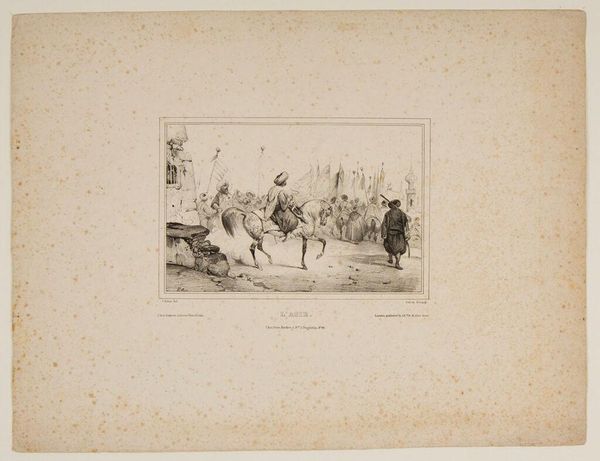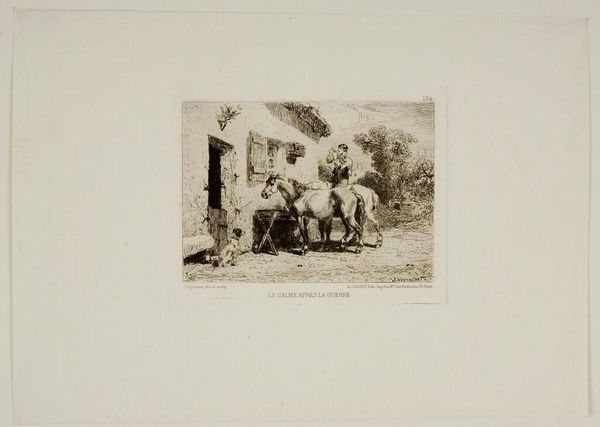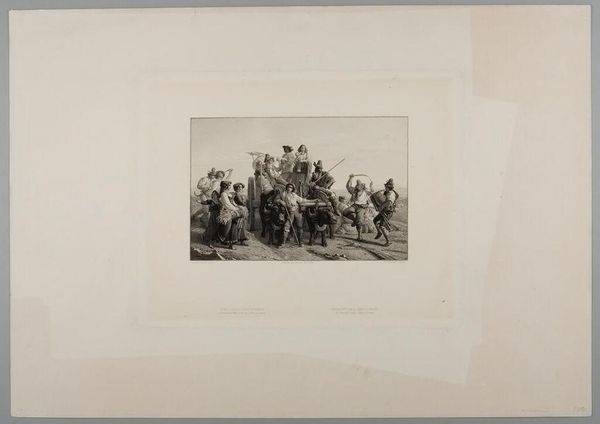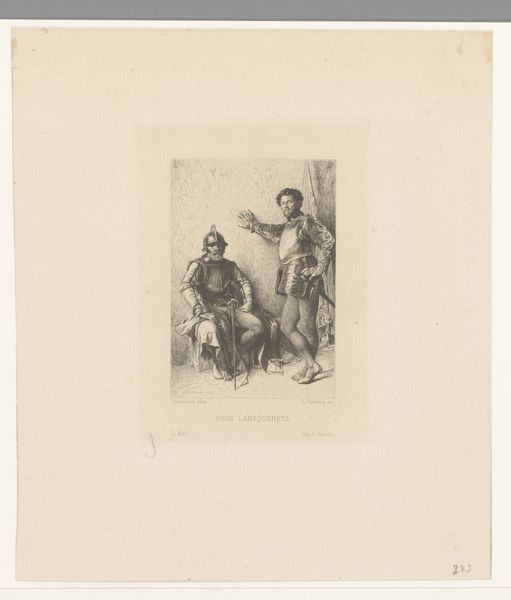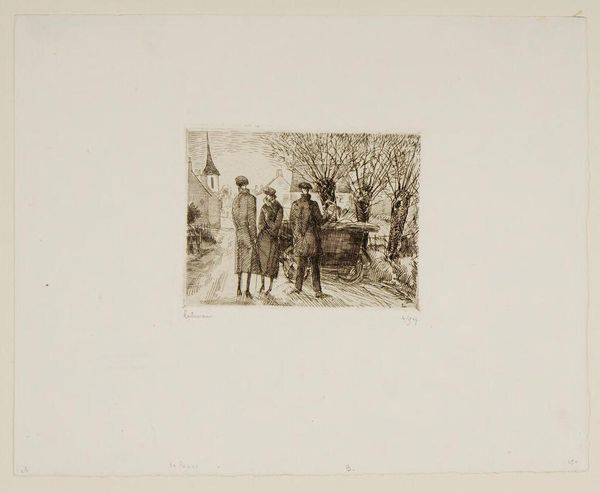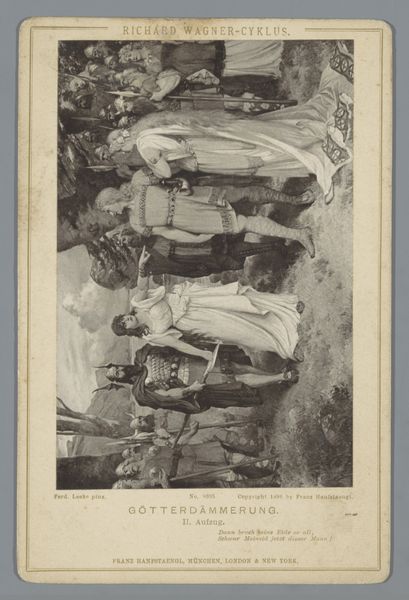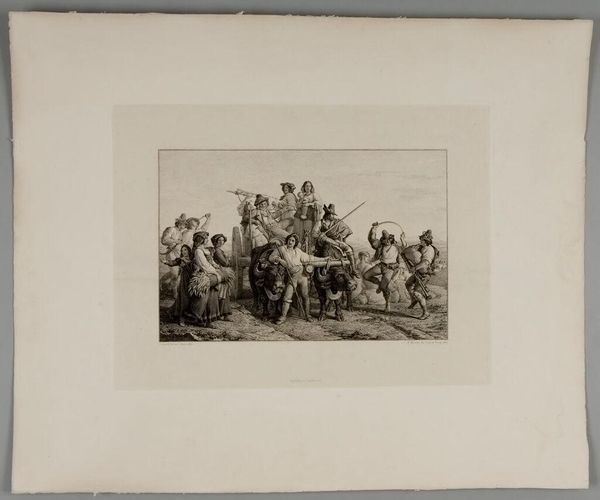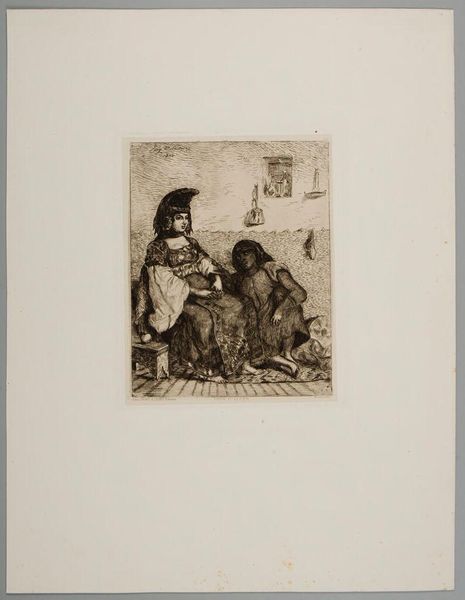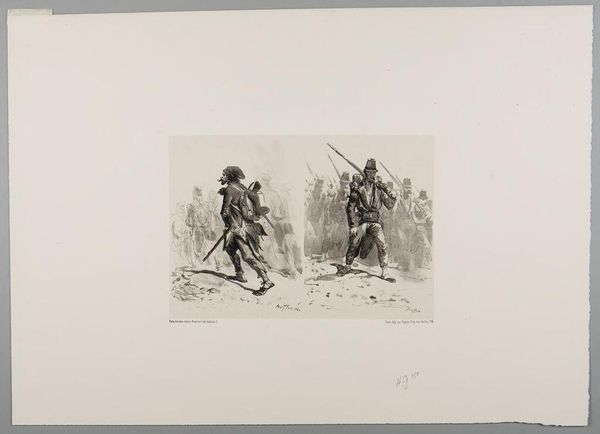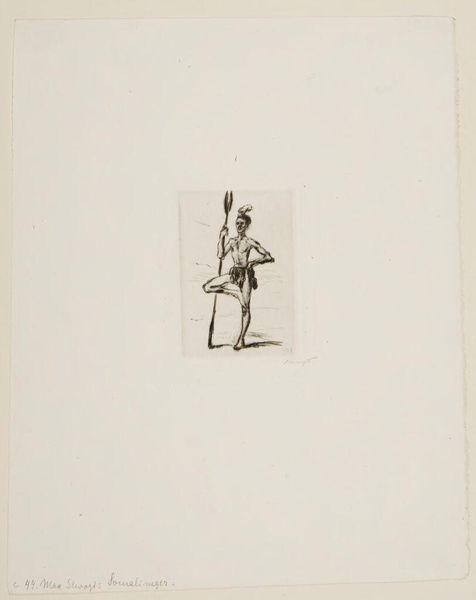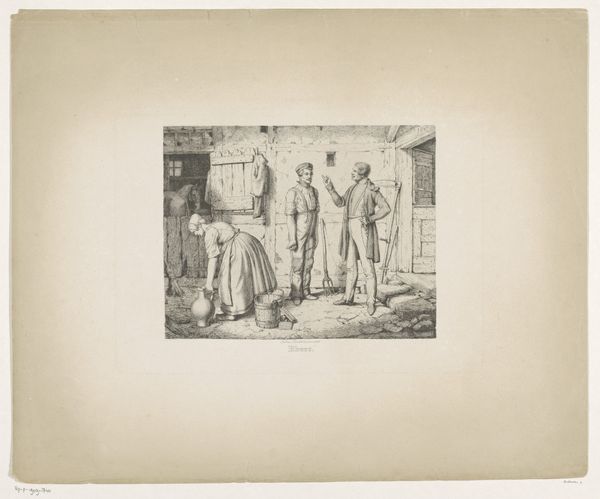
Copyright: CC0 1.0
Curator: Here we have Auguste Raffet’s “Light Infantry Soldiers and Turks,” housed here at the Harvard Art Museums. Editor: It has a very somber tone, doesn’t it? The light is muted, the figures almost blend into the background. Curator: Raffet’s masterful use of lithography allows for incredible tonal range. Notice how the figures are clustered together, a tight composition emphasizing their shared space. Editor: The turbans worn by the 'Turks' are highly symbolic, pointing to their distinct cultural and religious identity in the context of 19th-century European perceptions of the Ottoman Empire. It’s a loaded image, isn’t it? Curator: Indeed. The arrangement of the figures—the interplay of gazes and stances—creates a palpable tension. Are they negotiating, observing, or simply coexisting warily? Editor: These visual cues speak volumes about intercultural dynamics and power relations. What a dense artwork! Curator: Precisely. It's a potent example of how formal elements can communicate complex narratives. Editor: Seeing how symbols work inside compositions really opens up new ways of thinking about how art communicates across time.
Comments
No comments
Be the first to comment and join the conversation on the ultimate creative platform.
